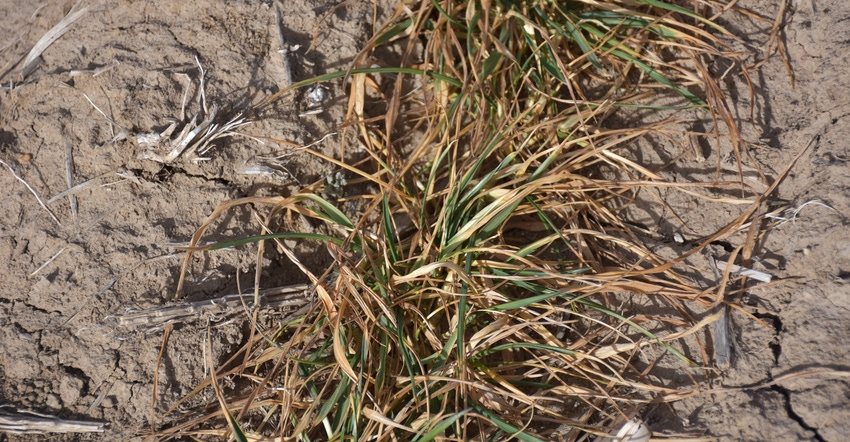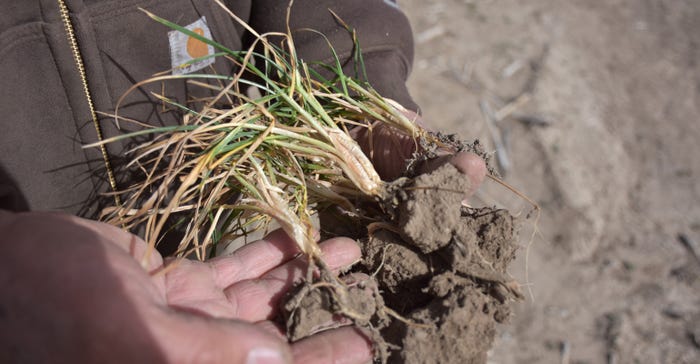
The amount of Kansas in extreme drought doubled from the March 1 report of the U.S. Drought Monitor to the March 8 report. During that time the first traces of the worst category, exceptional drought, crept across the Oklahoma border in two counties.
Drought also worsened in the panhandle regions of Oklahoma and Texas, and the condition of the hard red winter wheat crop for 2018 is looking bleak as wheat breaks dormancy and tries to begin growing with a shallow root system and a severe shortage of topsoil moisture.
In western Kansas, the period from Oct. 7 to Feb. 13 was the driest on record going back to 1874, with only a trace of moisture so far this year.
In south-central Kansas, the National Weather Service records show that the last measurable rain was 0.4 inch on Nov. 29. Since then, the area has received less than an inch of rain.
Dry winters are routine in most of Kansas, and with the wheat crop in dormancy that doesn’t create a lot of concern, especially if fall moisture was sufficient to get the crop up and established with a good root system.
Unfortunately, this year for much of Kansas, fall moisture was not plentiful, temperatures were well above normal, and wheat went into the winter with shallow roots and drought stress. The result is apparent in the USDA crop progress and condition report from March 4: winter wheat conditions are 50% poor to very poor, 37% fair and just 13% good to excellent.
 SHALLOW ROOTS: Dry weather in the fall, coupled with delayed planting, left the wheat with a poorly developed root system when the crop went into dormancy. Very dry conditions over the winter continue to take a toll.
SHALLOW ROOTS: Dry weather in the fall, coupled with delayed planting, left the wheat with a poorly developed root system when the crop went into dormancy. Very dry conditions over the winter continue to take a toll.

Topsoil moisture was 76% short to very short, 23% adequate and 1% surplus. Subsoil moisture wasn’t much better: 73% short to very short, 27% adequate and 0% surplus.
Oklahoma wheat is in even worse shape, with 77% of the wheat crop in poor to very poor condition; just 17% in fair condition, 6% in good condition and nothing in excellent condition.
Weekly crop progress reports have not yet started in Nebraska, but water conditions are much better. About a quarter of the state is abnormally dry, but there is no drought.
Across Kansas, drought conditions are almost everywhere. More than 75% of the state is in moderate to exceptional drought. With extreme northern Kansas and extreme eastern Kansas showing up as “abnormally dry” but not yet in drought.
Western Kansas wheat grower and seedsman Vance Ehmke says he remembers another year almost exactly like this one — 1995 into spring of 1996. In the spring, temperatures were up and down, the wheat went in and out of dormancy, and the root reserves ran out. There was massive wheat abandonment, and farmers planted grain sorghum on those acres. Then the rains came and farmers harvested the best milo crop they’d ever seen.
Dare Kansas hope for a repeat of at least that good news? Of course. There is always room for hope.

But the forecasters are not overly optimistic. Both the one-month and three-month outlook maps from the Climate Prediction Center show a strong probability of above-average temperatures and below-average precipitation through May 15.
However, even a good rain or two good make all the difference in the wheat crop. Hard red winter wheat is an extremely resilient crop. And if it doesn’t rain until May but then turns wet — well, there’s always milo.
About the Author(s)
You May Also Like




